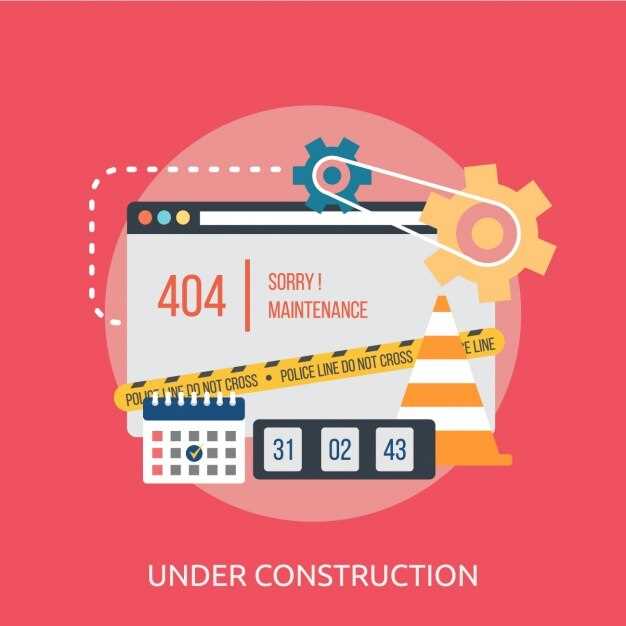
Restoration of a car’s dashboard is not just about aesthetics; it’s about enhancing the overall driving experience. A worn or damaged dashboard can detract from the appearance of your vehicle and may also impact the functionality of essential components. This comprehensive guide will walk you through the process of restoring your dashboard, ensuring that it looks and feels as good as new.
Before diving into the restoration process, it is crucial to understand the materials and tools needed for a successful outcome. Whether your dashboard is made of plastic, vinyl, or another material, each will require specific techniques and products for effective restoration. By identifying the type of dashboard you have, you can select the appropriate cleaning agents, adhesives, and protective coatings that will achieve the best result.
Throughout this guide, we will cover a variety of techniques ranging from basic cleaning to advanced repair methods. You will learn how to address common issues such as fading, scratches, and cracks. With patience, the right approach, and a little elbow grease, you can breathe new life into your dashboard and significantly improve your vehicle’s interior.
Assessing the Damage: Identifying the Issues with Your Dashboard
Proper restoration of your worn dashboard begins with a thorough assessment of its current condition. Identifying the various issues present will help you determine the right approach for restoration. Here are the key areas to inspect:
| Issue Type | Description | Possible Indicators |
|---|---|---|
| Cracks | Small to large fissures in the material that compromise integrity. | Visible splits, rough edges, or sharp fragments. |
| Fading | Loss of color and luster due to UV exposure and wear over time. | Discoloration, uneven tones, or dull surfaces. |
| Peeling | Layers of dashboard surface material flaking off, exposing raw components. | Patchy areas, loose sections, or exposed substrates. |
| Warping | Deformation of the dashboard surface caused usually by heat or moisture. | Uneven surfaces, bowed sections, or difficulty aligning with vehicle structure. |
| Stains | Discoloration from spills or long-term dirt accumulation. | Dark spots, residues, or persistent marks. |
| Texture Damage | Roughness or loss of texture affecting the dashboard’s appearance. | Smooth patches, inconsistent feel, or damage to embossed areas. |
After identifying these issues, prioritize them based on severity and potential impact on the overall vehicle appearance. A systematic evaluation will not only direct your restoration efforts but will also save time and resources during the DIY process.
Choosing the Right Materials for Dashboard Restoration

When embarking on a dashboard restoration project, selecting the appropriate materials is crucial for achieving a durable and visually appealing result. The materials you choose will significantly affect not only the aesthetics but also the longevity of your restored dashboard.
1. Vinyl and Upholstery Materials: For dashboards originally covered in vinyl, selecting the right type of vinyl is essential. Opt for high-quality automotive-grade vinyl that is UV-resistant and designed to withstand temperature fluctuations. This ensures that the new covering will not fade or crack over time.
2. Adhesives: The choice of adhesive can make or break your restoration. A strong automotive adhesive specifically formulated for vinyl and plastic is ideal. These adhesives provide a lasting bond and resist heat and moisture, which are common in vehicle interiors.
3. Paints and Dyes: If you plan to repaint your dashboard, using a high-quality automotive paint is vital. Look for paints that are designed for plastic surfaces and possess good flexibility and UV resistance. Alternatively, specialized dyes can be used to restore color without the need for a complete repaint.
4. Repair Kits: For small scratches and dents, consider utilizing repair kits that include fillers and sanders. Products designed specifically for dashboard restoration can ensure a seamless finish, allowing for easy blending with the existing material.
5. Protective Coatings: After restoration, applying a protective coating can extend the life of your dashboard. Select a clear coat designed for automotive interiors that will protect against UV rays, dirt, and moisture while enhancing the finish.
By carefully selecting these materials, you can ensure that your dashboard restoration not only revitalizes the appearance of your vehicle but also stands up to daily use and environmental factors.
Step-by-Step Cleaning Process for Your Dashboard
Restoring the look of your dashboard begins with a thorough cleaning. Follow these steps to effectively clean your dashboard and prepare it for restoration.
- Gather Your Materials:
- Microfiber cloths
- Soft brush or paintbrush
- Dashboard cleaner (or a mixture of mild soap and water)
- Detailing brush or old toothbrush
- Protective gloves
- Vacuum cleaner (optional)
- Remove Loose Dirt and Debris:
Before applying any cleaner, use a vacuum cleaner with a brush attachment to remove loose dirt from the dashboard. If a vacuum is unavailable, use a microfiber cloth to wipe away the dust.
- Apply Cleaner:
Spray your dashboard cleaner onto a microfiber cloth, not directly onto the dashboard. This prevents overspray and potential damage. For homemade solutions, mix mild soap with water, dampen the cloth, and then wipe the dashboard.
- Wipe Down the Dashboard:
Using the dampened microfiber cloth, gently wipe the surface of the dashboard. Pay close attention to areas with stubborn stains or grime. Use a soft brush to reach into crevices and remove embedded dirt.
- Clean Vents and Buttons:
Utilize a detailing brush or an old toothbrush to clean air vents, buttons, and small spaces around the dashboard. This will ensure that every area receives attention, maintaining a uniform appearance.
- Dry the Surface:
After cleaning, use a dry microfiber cloth to wipe down the dashboard. This step prevents any streaks and ensures that the surface is free of moisture.
- Apply Protectant:
To help protect your dashboard from future wear and UV damage, apply a quality protectant specifically designed for dashboards. Follow the manufacturer’s instructions for application.
Following this step-by-step process will help keep your dashboard clean and in good condition, setting the stage for a successful restoration project.
Repair Techniques for Cracks and Scratches on the Dashboard

Restoring a worn dashboard often involves addressing cracks and scratches that can detract from the overall appearance of your vehicle’s interior. Fortunately, there are several effective techniques you can employ to repair these damages and enhance the dashboard’s aesthetics.
1. Cleaning the Surface: Before initiating repairs, thoroughly clean the dashboard with a mild detergent and a soft cloth. This step removes dirt and debris, ensuring that the repair materials adhere properly to the surface.
2. Filling Cracks: For larger cracks, use a suitable plastic or vinyl filler. Apply the filler according to the manufacturer’s instructions, ensuring it slightly overflows the crack to allow for sanding. Once dried, use fine-grit sandpaper to smooth the surface and blend it with the surrounding area.
3. Using a Repair Kit: Many auto parts stores offer specific dashboard repair kits. These kits usually include a compound and color matching materials designed for your dashboard’s texture and color. Follow the kit instructions for filling and smoothing cracks, ensuring a seamless restoration.
4. Addressing Scratches: Shallow scratches can be repaired using a touch-up paint or a vinyl dye. Choose a color that matches your dashboard and apply it carefully to the scratched area. Buff it gently with a soft cloth once it dries to achieve a uniform look.
5. Heat Treatment: For minor cracks, applying gentle heat using a heat gun can help the material expand and close the crack temporarily. After heating, apply a filler to secure the repair. Be cautious not to overheat, as this can damage the dashboard further.
6. Final Touches: After completing the repairs, finish with a quality dashboard protectant. This not only enhances the appearance but also provides a protective layer against future wear and tear, ensuring your restoration efforts endure.
By employing these techniques, you can effectively restore the appearance of your dashboard, making it look new and well-maintained.
Applying New Finishes: Paint and Coating Options Explained
Restoring your worn dashboard can greatly enhance the overall appearance of your vehicle’s interior. One of the most critical steps in this process is the application of new finishes. There are various paint and coating options available, each catering to different needs and preferences.
1. Vinyl Dash Paint
Vinyl dash paint is specifically designed for use on dashboard surfaces made from vinyl. This type of paint adheres well and provides excellent durability, ensuring that it can withstand the rigors of everyday use. When selecting a vinyl dash paint, look for products that are UV resistant to prevent fading over time. Preparation is key; thorough cleaning and priming will allow for better adhesion and a smoother finish.
2. Spray Paint for Plastics
For dashboards made of plastic, spray paint formulated for plastic surfaces is an ideal choice. This option typically includes a base primer, ensuring optimal adhesion. Select a high-quality brand and opt for a matte or satin finish, depending on your preference. Remember to apply multiple thin coats to achieve an even finish without drips or runs.
3. Specialty Coatings
Specialty coatings offer added protection and a unique finish. Many of these products are designed to provide a textured surface, mimicking the original dashboard feel. Some coatings also have built-in UV protection and are resistant to scratches, which is crucial for maintaining the aesthetics of your restoration. Research different brands to find one that matches your desired finish and toughness requirements.
4. Clear Coats
Applying a clear coat after painting can significantly enhance the durability of your newly finished dashboard. Clear coats provide an additional layer of protection against UV rays, moisture, and general wear. They also add a glossy finish, which can rejuvenate an older dashboard’s appearance. Ensure the base paint is fully cured before applying a clear coat to avoid any compatibility issues.
5. Custom Finishes
If you’re looking for something unique, consider custom finishes like hydrographics or wraps. Hydrographics involve the transfer of intricate designs onto the dashboard surface using a water-based solution. Alternatively, vinyl wraps can change the color or texture of the dashboard, providing limitless customization options. These methods may require a bit more skill and equipment but can produce stunning results.
In conclusion, each paint and coating option serves specific restoration needs. By understanding these choices, you can select the best materials that align with your project goals and desired outcome. Careful preparation and application will ensure a beautiful, lasting finish for your dashboard restoration.
Maintaining Your Restored Dashboard: Tips for Longevity
After successfully restoring your dashboard, it is essential to implement maintenance practices that will keep it looking fresh and functional for years to come. Start by regularly cleaning the dashboard with a soft, damp cloth to remove dust and grime. Avoid harsh chemicals that may damage the finish or material. Opt for a gentle cleaner specifically designed for automotive interiors.
Protecting the dashboard from UV damage is crucial. Prolonged exposure to sunlight can lead to fading and cracking. Consider using a windshield sunshade or parking in shaded areas whenever possible. Additionally, applying a UV protectant specifically formulated for dashboards can help create a protective barrier against harmful rays.
Pay attention to temperature fluctuations that can affect the dashboard’s material. Extreme heat can cause plastics to warp and leather to dry out. To mitigate this, maintain a stable indoor climate if the vehicle is parked for extended periods. When driving, keep the interior temperature moderate, using air conditioning or ventilation as needed.
For dashboards made of leather or softer materials, regular conditioning is necessary. Utilize a quality leather conditioner to keep the material supple and prevent cracking. Follow the manufacturer’s instructions for application frequency, typically every few months.
Periodically inspect the dashboard for signs of wear or damage. Addressing minor issues promptly can prevent them from escalating into more significant problems. Check for loose trim pieces or any signs of peeling, and make necessary repairs while they are manageable.
Lastly, limit the clutter on your dashboard. Excessive items can cause scratches and abrasions over time. Maintain a clean and organized space to enhance both aesthetics and longevity.
